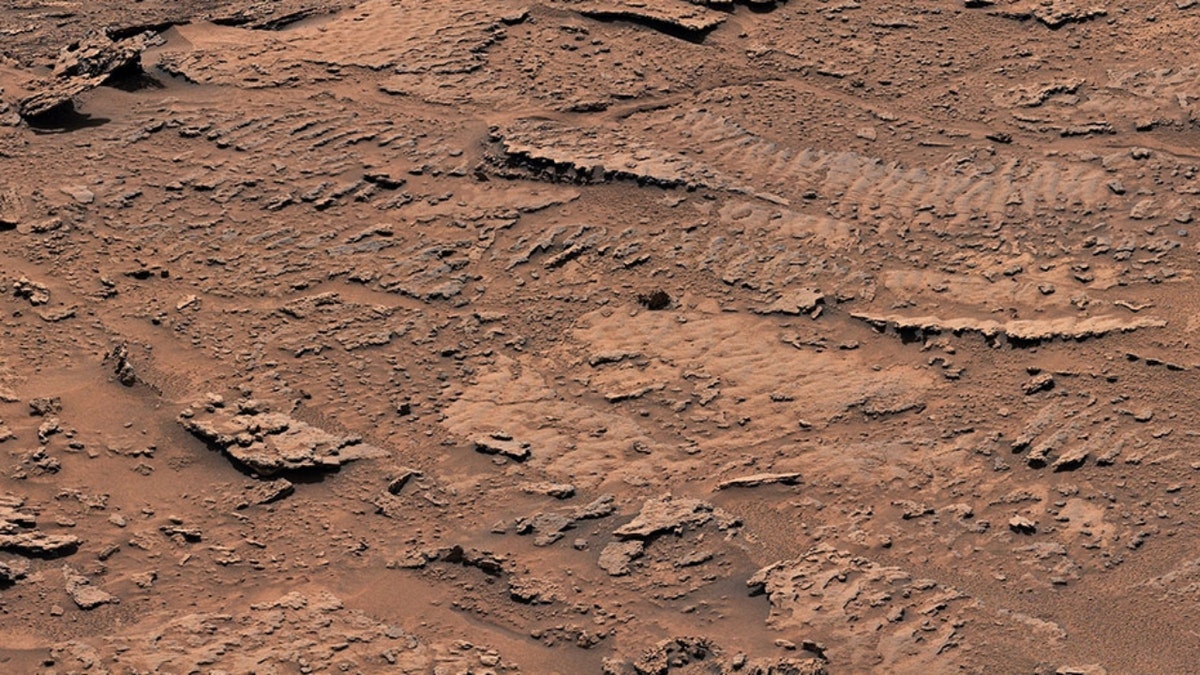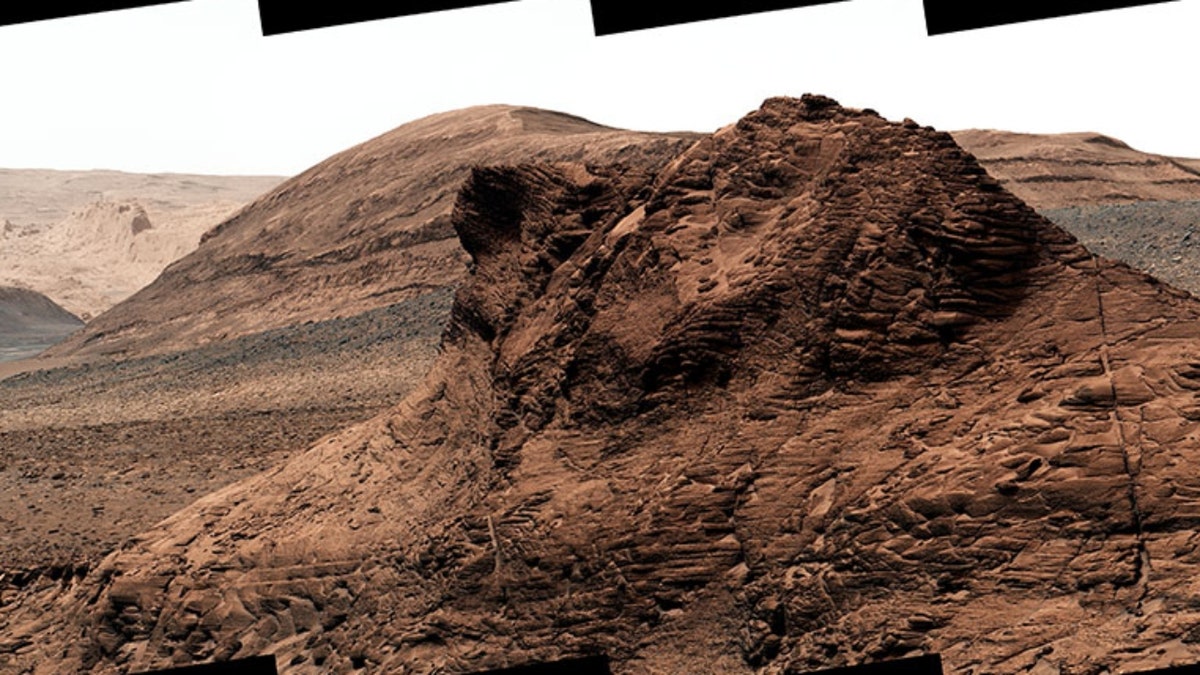NASA releases audio of Mars helicopter in flight
Goddard Space Center Chief Scientist Jim Garvin provides insight on ‘Fox New Live.’
NASA's Curiosity rover has recently discovered rippled rock textures that suggest lakes existed in a region of ancient Mars that scientists had expected to be drier.
Rock layers at the "sulfate-bearing unit" formed in drier settings than regions explored earlier in the mission, and the area's sulfates are believed to have been left behind when water was drying to just a trickle.
However, when the rover arrived there last fall, the team was surprised to find the "clearest evidence yet of ancient water ripples that formed within lakes."
"This is the best evidence of water and waves that we’ve seen in the entire mission," Ashwin Vasavada, Curiosity’s project scientist at NASA’s Jet Propulsion Laboratory, said in a statement. "We climbed through thousands of feet of lake deposits and never saw evidence like this – and now we found it in a place we expected to be dry."
NASA CAPTURES PHOTO OF 'BEAR'S FACE' ON THE SURFACE OF MARS

Billions of years ago, waves on the surface of a shallow lake stirred up sediment at the lake bottom. Over time, the sediment formed into rocks with rippled textures that are the clearest evidence of waves and water that NASA’s Curiosity Mars rover has ever found. (Credits: NASA/JPL-Caltech/MSSS)
Billions of years ago, NASA said, waves on the surface of a shallow lake stirred up sediment at the bottom, creating the rippled rock textures.
Climbing nearly half a mile above the base of Mount Sharp, the rover found the textures preserved in the "Marker Band," which is a thin layer of dark rock that stands out from the rest of the mountain. The rock layer is so hard that Curiosity has not been able to drill a sample from it after several attempts, and scientists will be looking for softer rock in coming weeks.

NASA’s Curiosity used its Mastcam to capture this 360-degree panorama of "Marker Band Valley" on Dec. 16, 2022, the 3,684th Martian day, or sol, of the mission. Rippled rock textures found in this area are the clearest evidence the rover has seen of water and waves from Mars’ ancient past. (Credits: NASA/JPL-Caltech/MSSS)
NEIL DEGRASSE TYSON SAYS JAMES WEBB SPACE TELESCOPE IS WINDOW TO UNIVERSE 'NEVER BEFORE ACHIEVED'
Another clue within the Marker Band is an unusual rock texture that was likely caused by some sort of regular cycle in the weather or climate.

At the bottom of this valley, called Gediz Vallis, is a mound of boulders and debris that are believed to have been swept there by wet landslides billions of years ago. The rover team hopes to get a closer look at this evidence for flowing water, which is likely the youngest that Curiosity will ever find. (Credits: NASA/JPL-Caltech/MSSS)
In addition, NASA said that scientists can see another clue to the history of Mars' water in a valley named Gediz Vallis. Scientists suspect that wet landslides occurred there – resulting in debris – and a channel running through the valley that starts on Mount Sharp is thought to have been eroded by a small river.
CLICK HERE TO GET THE FOX NEWS APP
The rover team hopes to have another chance to survey the debris at the Gediz Vallis Ridge.




















